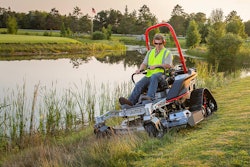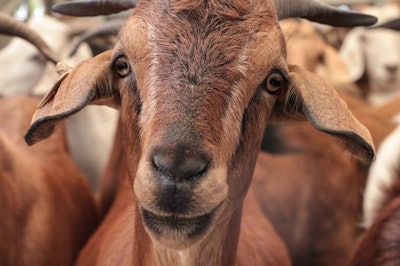
 Photo: Goats On the Go
Photo: Goats On the GoYou’ve probably seen the headlines with the cute puns talking about goats being hired to clear certain properties across the country, but what really goes into goatscaping and is it a possible fit for your landscaping business?

“The market is pretty saturated with goat rental companies already, and this is something that is so intense and takes over personal life so much, that it wouldn’t be practical to start it in this climate or add it to an existing company’s offerings unless you’re incredibly passionate about goats and are ready to eat, sleep and breath for it,” says Megan Kibby, co-owner of Red Wagon Goats based in Decatur, Georgia.
Indeed, this business is not an endeavor for the faint-hearted. Below are some of the aspects to consider when it comes to running a goatscaping company.
Ins and outs of a goatscaping business
Everyone has a different story as to how they got into the goatscaping business, but no matter what drew them into this niche service, they have to be all in to ensure their companies survive.
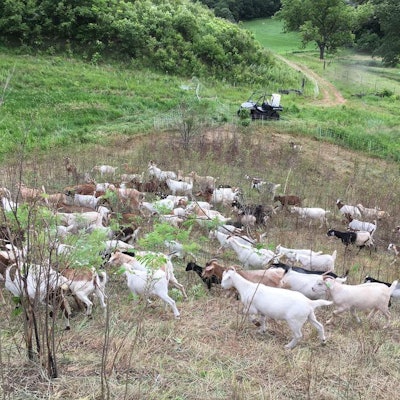 Photo: Goats On the Go
Photo: Goats On the Go“Everybody who owns a few goats is thinking about getting into this business right now,” says Aaron Steele, founder of Goats On the Go, based in Ames, Iowa. “So, in order to carve out a place in the market, I think that we’re going to have to take a very thoughtful, professional, expertise-filled approach to it.”
One major aspect to prepare for is the various bills to expect. The price for buying the goats themselves will depend on how you acquire them and what you’re looking for.
Kibby advises buying goats from vetted, disease-free herds that are hearty and disease resistant for your climate and region. She says well-vetted goats can cost anywhere from $250 to $750.
Meanwhile, for Steele, his goats have the dual purpose of providing weed and brush control and meat. The goats are able to convert nutrients that would have been wasted into nutrition for people. He says you might pay $350 to $400 for a young breeding female goat.
“As we continue to grow our herd, the females are the ones we keep longest, and our males are sold for meat at about at least a year and half of age,” Steele says. “We do sell that under our own brand, but we also sell it into commodity markets.”
On the other end of the spectrum, Tammy Dunakin, owner of Rent-A-Ruminant, LLC based in Seattle, Washington, rescues her goats and gives the unwanted goats a home. She guarantees they will not be sent to a slaughterhouse at the end of their working days.
“We get a lot of work because we don’t slaughter,” Dunakin says. “Even if we might be more expensive than another company, they’ll go with us a lot of times because they want to do the right thing.”
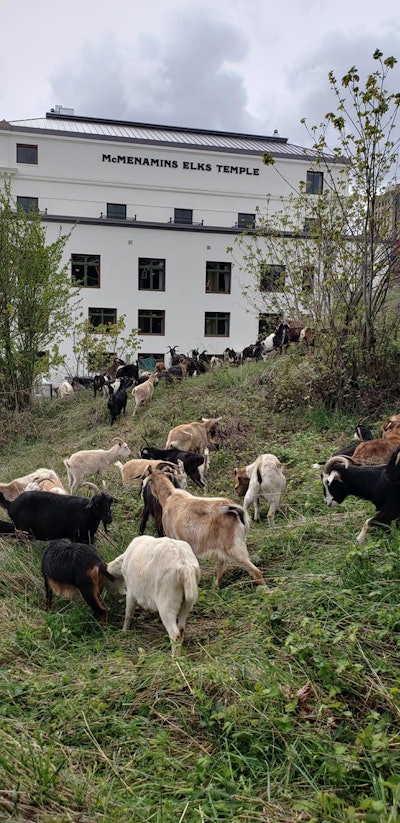 Photo: Rent-A-Ruminant LLC
Photo: Rent-A-Ruminant LLCThe overhead for caring for the goats is a much larger bill as you have to be prepared to pay for their feed, veterinary care and supplies, which will only grow with your herd size. Kibby says you can expect about to pay $25,000 to $50,000 annually for the first couple of years.
Like most things in the green industry, goatscaping is seasonal and this means you’ll need to have the proper housing and feed for the goats over the winter.
“When the goats aren’t working, you’ll need to procure feed and that gets expensive fast,” Kibby says.
Dunakin says the feed bill alone for her 200 goats is about $20,000 a year, at minimum.
Aside from the goats, the main equipment needed to get the job done includes portable electric fencing to enclose a targeted area, an energizer or solar power source to provide electricity to the fence and a truck and trailer.
Steele says some goatscaping operations forgo the electric fencing and opt to keep a herder on the site at all times, but there is a labor tradeoff for either one.
Some operations will drop the goats off and come and check on them from time to time but Rent-A-Ruminant lives on-site with the goats 24/7 while the goats are on a property.
“I lived in the backseat of my king cab pickup for the first six years,” Dunakin says. “Now I have a little travel trailer that I use.”
Other tools you need for the job are potable water and portable shelter for the goats, hedge trimmers and chainsaws for clearing brush to put the fencing up.
Pricing and customer base
When it comes to what to charge customers for goat grazing, it will vary based on the nature of the project, the size of the property, the type of vegetation and how long it takes the goats to do the job.
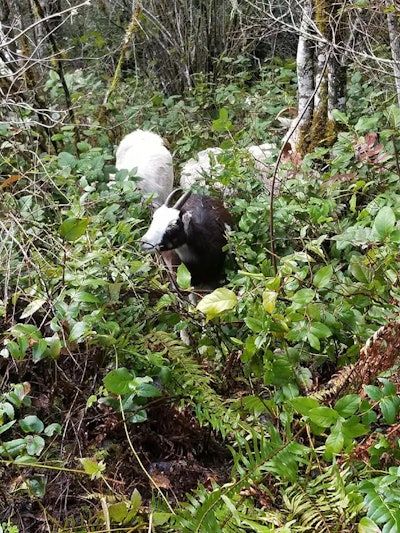 Photo: Rent-A-Ruminant LLC
Photo: Rent-A-Ruminant LLC“The price varies even more drastically from one market to another across the country,” Steele says. “But I would say a safe ballpark (price) is $800 to $1,500 dollars per acre for a project that’s on the smaller side, say under five acres.”
Meanwhile, for really large projects such as clearing 40 to 50 acres of wildfire fuel in California, Steele says the price will, typically, be lower. He says that for projects under 10 acres, they’ll use a herd of about 40 goats who can clear an acre every three to five days.
Steele says his customer base is split between local governments or government agencies and homeowners or smaller businesses who need them for difficult job sites.
“It would almost always be less expensive to hire a more traditional landscaping crew or fall back on some other solution, herbicides or mowing or mechanical removal, and if the ground is flat and there are no special circumstances, that would be the case,” Steele says. “But we’re often hired to do very steep topography, land adjacent to creeks and ponds where we worry about erosion and chemical runoff. We’re hired to do it in places that would really be challenging, if not unsafe, to be handling chainsaws and other handheld equipment. We’re talking about places where you get vines and thorns tangling around your ankles while you’re on a steep slope and you can’t even see your feet.”
In the Seattle area, Dunakin says she charges $820 per day. Depending on the job, it might take the goats four days to do an acre or 10 days to clear an acre based on the vegetation. She either uses 60-goat herds or 120-goat herds.
She says Rent-A-Ruminant does work with just about everyone including cities, local towns, government agencies and corporate companies.
“They do it for the positive PR that they get because people absolutely love goats,” Dunakin says. “If you’re working in an area where there’s people around, they will come out of the woodwork to watch the goats, and they love it.”
 Photo: Rent-A-Ruminant LLC
Photo: Rent-A-Ruminant LLCAs for Kibby, she says all of their pricing is custom per job but most residential jobs end up in the $400-$1,000 range depending on size, density of foliage and complexity of set up. She says their day rate is $200, which includes about 25 goats.
Kibby says most of their residential jobs are completed in two to five days. The majority of Red Wagon Goats’ customers are residential homeowners but Kibby says they do have some requests from commercial and municipal properties.
“Targeted goat browsing is a great way to clear invasive plant species, preserve native trees and make outdoor spaces useable,” Kibby says. “It isn’t a lawn mowing service or a landscaping service, but it is perfect for all these metro Atlanta backyards that are completely natural and overgrown with ivy because a lot of people don’t want to spray toxic chemicals where their dogs and kids play.”
She adds that goatscaping also has a novelty and sweetness to it.
“Our goats aren’t handled like livestock – they all have names and stories and we encourage people to text us photos of their favorites and learn their names,” Kibby says. “It’s very interactive and gets people out in their own backyard, a part of the process of transforming it.”
Check back tomorrow for part two where we’ll look at the benefits and challenges of goatscaping and how it can be incorporated into your business.



